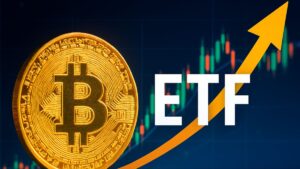Digital assets have matured into a global financial sector where transparency, psychology, and structural practices intersect. Market observers emphasize that, beyond price charts, underlying behaviors and systemic patterns define outcomes. This article examines critical elements shaping crypto trading, offering readers a clear perspective on the forces influencing today’s crypto economy.
The Psychology of Panic Selling in Crypto Markets

Volatility as a Defining Feature
Crypto markets are globally recognized for extreme volatility, where double‑digit price swings can occur within hours. This volatility is both a technical and psychological phenomenon, as it directly influences investor behavior. Panic selling emerges when traders interpret sudden declines as signals of collapse rather than as part of normal market cycles. The speed of digital asset trading, combined with 24/7 market access, amplifies these reactions.
Emotional Drivers of Market Exits
Investor sentiment is often shaped by fear and uncertainty. When prices fall sharply, many retail participants liquidate positions to avoid further losses, even if fundamentals remain unchanged. This behavior reflects a broader pattern observed in financial psychology: loss aversion. In crypto, the effect is magnified by constant exposure to price feeds, social media commentary, and sensational headlines that reinforce negative sentiment.
The Role of Market Narratives
Narratives play a central role in accelerating panic. Terms like “crypto winter” or “market crash” dominate news cycles during downturns, creating a feedback loop where perception drives action. Large holders, often referred to as whales, are aware of this dynamic and may strategically time trades to exploit retail fear. By selling into weakness, they trigger cascading liquidations that allow them to re‑accumulate assets at lower prices.
Education as a Stabilizing Factor
Financial education is increasingly cited as the most effective defense against panic selling. Understanding that corrections are inherent to market cycles helps investors contextualize volatility. Analysts emphasize that informed participants are less likely to react impulsively and more likely to evaluate long‑term fundamentals. In this sense, education functions as a stabilizing force, reducing the likelihood of mass sell‑offs driven purely by emotion.
Risk Management as the Golden Rule

Defining Capital Exposure in Volatile Markets
Risk management is widely regarded as the foundation of sustainable participation in cryptocurrency markets. Unlike traditional assets, digital currencies trade continuously, exposing investors to constant fluctuations. Establishing clear limits on capital exposure is therefore essential. Analysts often highlight the 1–2% rule, where no single trade should risk more than a small fraction of total holdings. This principle ensures that even during extended downturns, portfolios remain intact and capable of recovery.
The Strategic Role of Stop-Loss Orders
Stop-loss mechanisms are not merely technical tools but structural safeguards. By setting predetermined exit points, traders reduce the influence of emotion during rapid declines. Stop-losses also provide clarity, allowing participants to quantify potential downside before entering a position. In highly liquid markets, these orders act as automatic stabilizers, preventing catastrophic losses that could otherwise erase months of gains in a matter of hours.
Diversification and Position Sizing Practices
Diversification remains a central theme in financial risk management, and its relevance is amplified in crypto. Allocating capital across multiple assets, sectors, or even stablecoins reduces vulnerability to isolated shocks. Position sizing complements this approach by ensuring that no single allocation dominates portfolio risk. Together, diversification and sizing create resilience, enabling investors to withstand volatility without jeopardizing long-term objectives or overall liquidity.
Discipline as a Structural Advantage
Risk management is less about predicting price direction and more about controlling outcomes. Market professionals emphasize that disciplined frameworks outperform speculative instincts over time. By adhering to predefined rules, participants transform uncertainty into manageable exposure. This discipline, reinforced by consistent review and adjustment, provides a structural advantage in markets where unpredictability is the norm. Ultimately, survival through disciplined risk control is what allows capital to compound sustainably.
Identifying manipulation and protecting wealth

Market structures that enable manipulation
Crypto markets operate 24/7 across fragmented venues with uneven oversight, creating structural gaps where manipulation can thrive. Thin order books, cross‑exchange arbitrage, and opaque liquidity provision allow actors to influence prices with comparatively modest capital. In altcoins, limited market depth amplifies moves, while derivatives add leverage that cascades through spot positions via liquidations.
Understanding these mechanics clarifies why abrupt dislocations occur and why retail participants often face asymmetric information. Structural context frames signals more accurately than isolated candles or sensational headlines.
Pump‑and‑dump dynamics and distribution patterns
Classic pump‑and‑dump cycles begin with coordinated accumulation in low‑cap assets, followed by synchronized social amplification and rapid vertical rallies. Tell‑tale distribution appears as escalating wicks, widening spreads, and increasing slippage as insiders offload inventory into retail demand. Post‑pump, liquidity recedes, spreads widen further, and price stair‑steps down through prior support.
Distinguishing organic momentum from orchestrated hype requires tracking venue‑level flow, liquidity tiers, and the timing of influencer narratives. Pattern recognition matters: staged buying, choreographed messaging, and abrupt exit footprints frequently co‑appear.
Wash trading, spoofing, and flow anomalies
Wash trading fabricates volume via self‑matched orders, often clustering at round sizes and repeating across minutes. Spoofing presents as large, fast‑cancelling orders near the book that vanish as the price approaches, nudging sentiment without genuine intent. Additional anomalies include mirrored prints across exchanges, sudden depth shifts, and inconsistent time‑and‑sales versus reported aggregates. Cross‑checking spot, derivatives, and on‑chain data helps filter noise. If volume rises without corresponding liquidity or settlement activity, the signal is suspect and warrants heightened caution immediately.
News timing, narrative cover, and verification
Manipulators frequently align moves with news to legitimize positioning, exploiting headline latency and retail reaction speed. Watch for price surges that precede announcements, oversized moves versus fundamentals, and narrative pivots that justify inventory exits. Verification rests on multi‑source evidence: on‑chain transfers, order‑book depth, funding rates, open interest, and cross‑venue spreads. When stories outpace data, classify events as narrative‑heavy and evidence‑light, reduce exposure, and prioritize capital preservation. Informed analysis, not speculation, defends portfolio integrity during turbulent cycles effectively.
Conclusion
The cryptocurrency ecosystem continues to evolve under conditions of volatility, shifting sentiment, and structural complexity. Observers note that market outcomes are shaped not only by price action but also by psychological responses, risk frameworks, and the presence of manipulative practices. These elements collectively define the environment in which digital assets operate.










